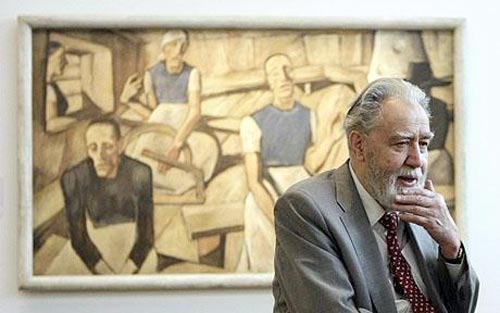Definitely, the twenty-first century seems to be changing appreciably the chances of appreciating art, regardless of our ability to move geographically or in the spot in the world where we reside.

On one hand, the brand new Art of Google Project enables to explore museums around the world, -it’s intriguing indeed the absence of institutions like the Louvre, the Pompidou and the Prado museum- and view hundreds of artworks through a zoom with a stunning resolution similar to that with which art restorers work (it offers, using a tool by Spanish company Madpixel that photographs each frame synchronized to the nearest millimeter, an image of 14,000 million pixels, a thousand times more detail than detail provided by a normal camera) and create and share on the network our own collection of masterworks.
On the other hand, the phenomenon being favored by the economic crisis, it is increasingly common for major museums around the world to take advantage of the time period during which their buildings are being renovated to host tours of their most representative works, getting big change and economic benefits offering in turn the possibility to show them, sometimes even thousands of miles away.
This is the case of the National Museum of Catalan Art (MNAC) which, in exchange for 900,000 euros and a commitment to fund a research program that includes the digitization of the museum funds, has used its prestigious Romanesque rooms are temporarily closed to move the parts normally exposed to the elegant mansion where the Fundation Mapfre showroom has at Paseo de Recoletos, number 23 in Madrid until May 15.
This is an exceptional opportunity not only for the high value of the collection itself, one of the world´s best in its genre, but also because it has only left its residence in the MNAC in Montjuic on rare occasions. In fact only left Catalonia in 1937 on the occasion of the Universal Exhibition in Paris, where interestingly Picasso´s Guernica was presented for the first time, one of many historical avant-garde artists of the early century who was fascinated and inspired by the seductive primitiveness of this Romanesque works.
The extraordinary exhibition, curated by Jordi Camps, chief curator of MNAC Romanesque area, under the name The splendor of the Romanesque masterpieces, traces an itinerary divided into five sections (Colour in architecture, Monumental sculpture, A space for storytelling, The power of images and The treasure of the church) and includes 59 works ranging from murals to liturgical furniture objects through stone sculpture.
 Paul Oilzum
Paul Oilzum
You may want to use this unique opportunity when you rent Madrid accommodation to see this wonderful exhibition of Romanesque art in Madrid.?

 English
English